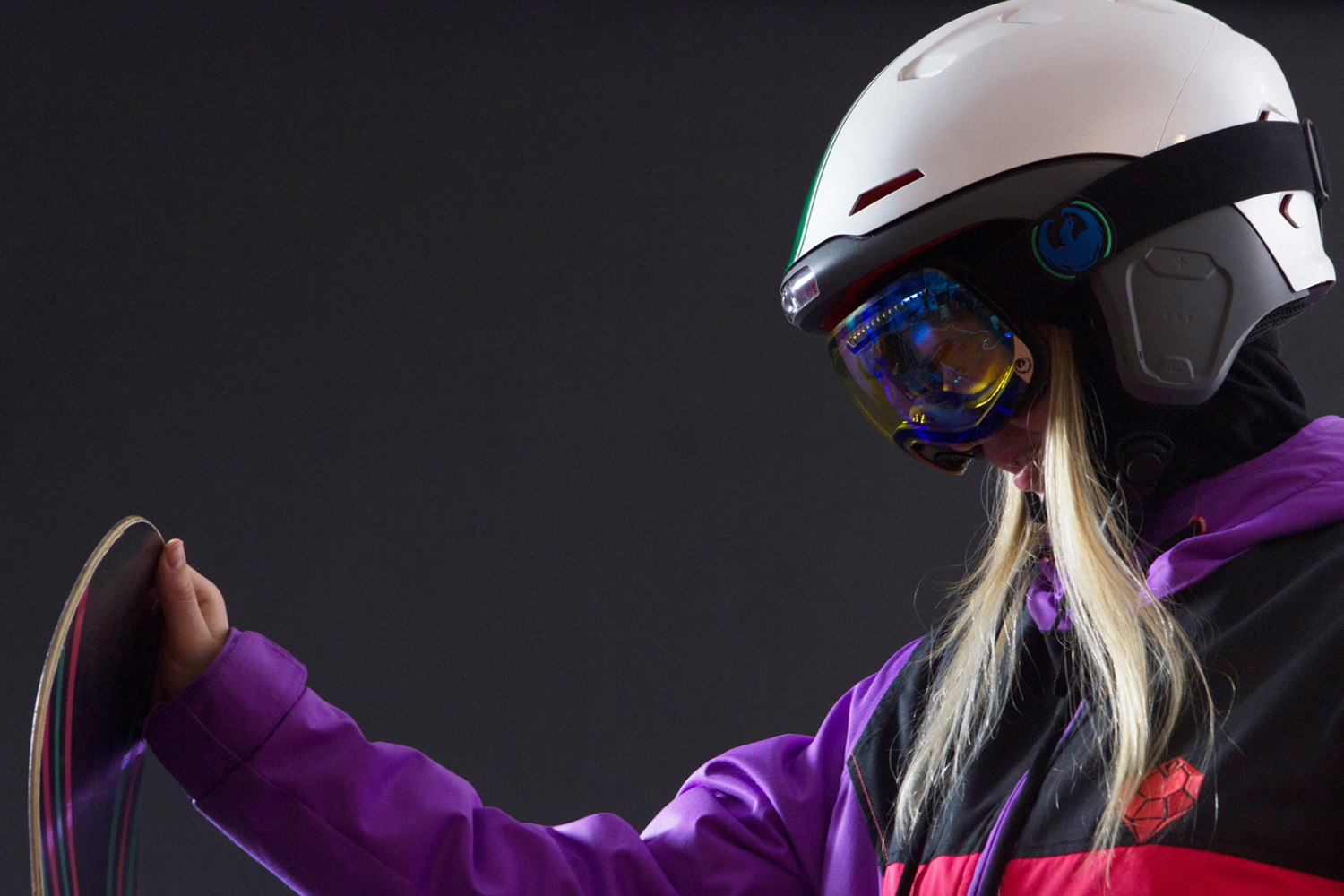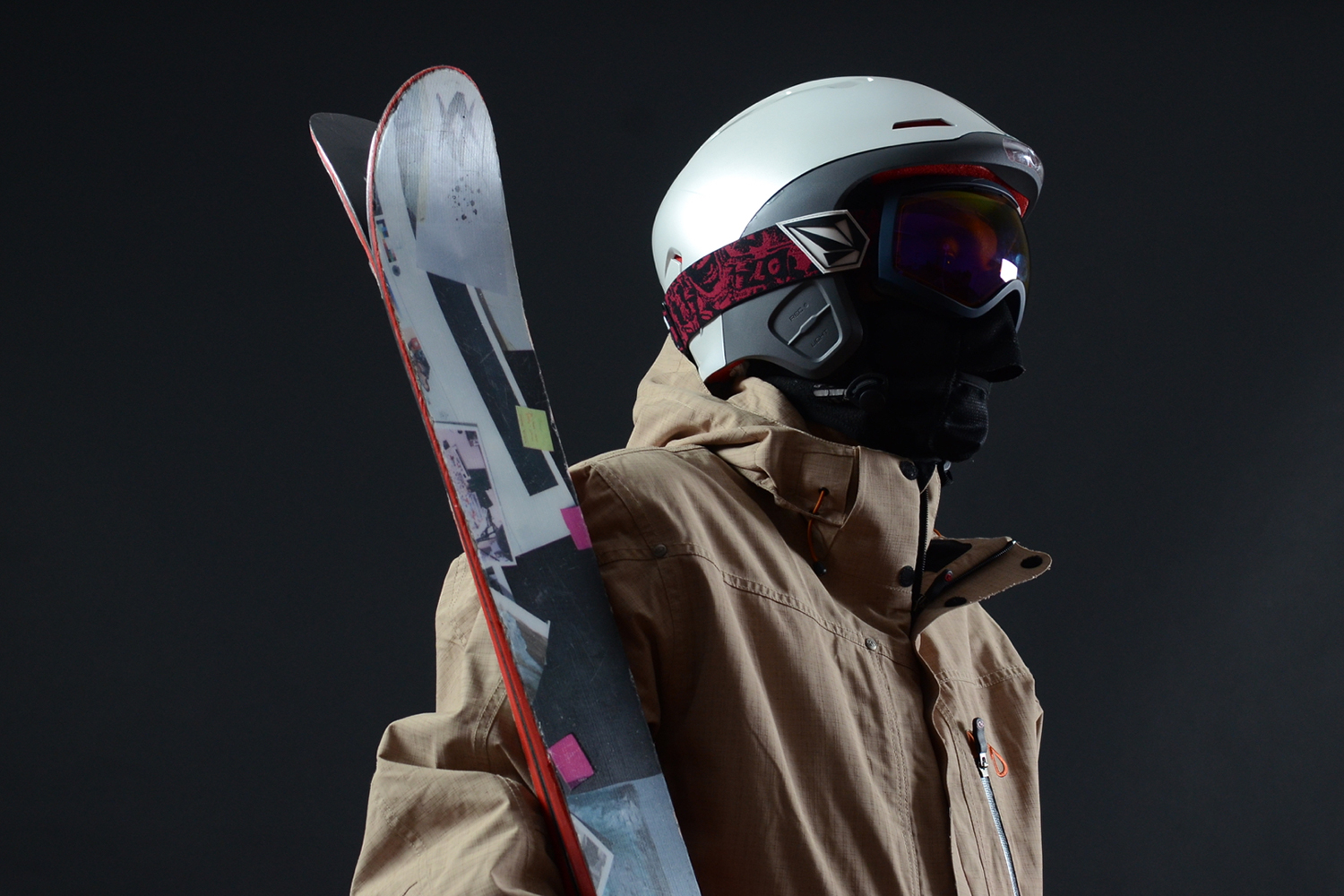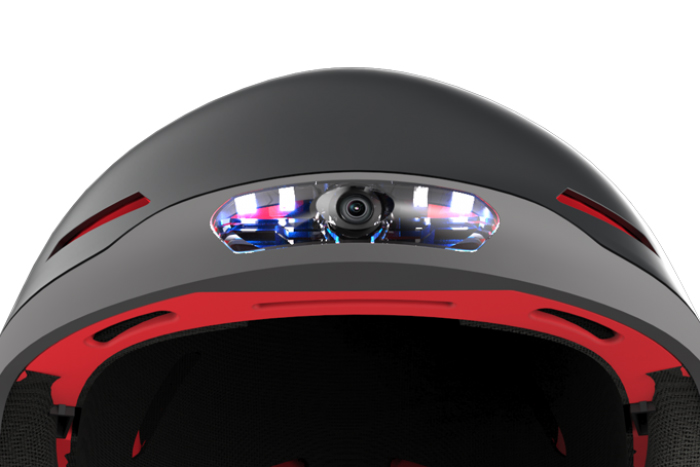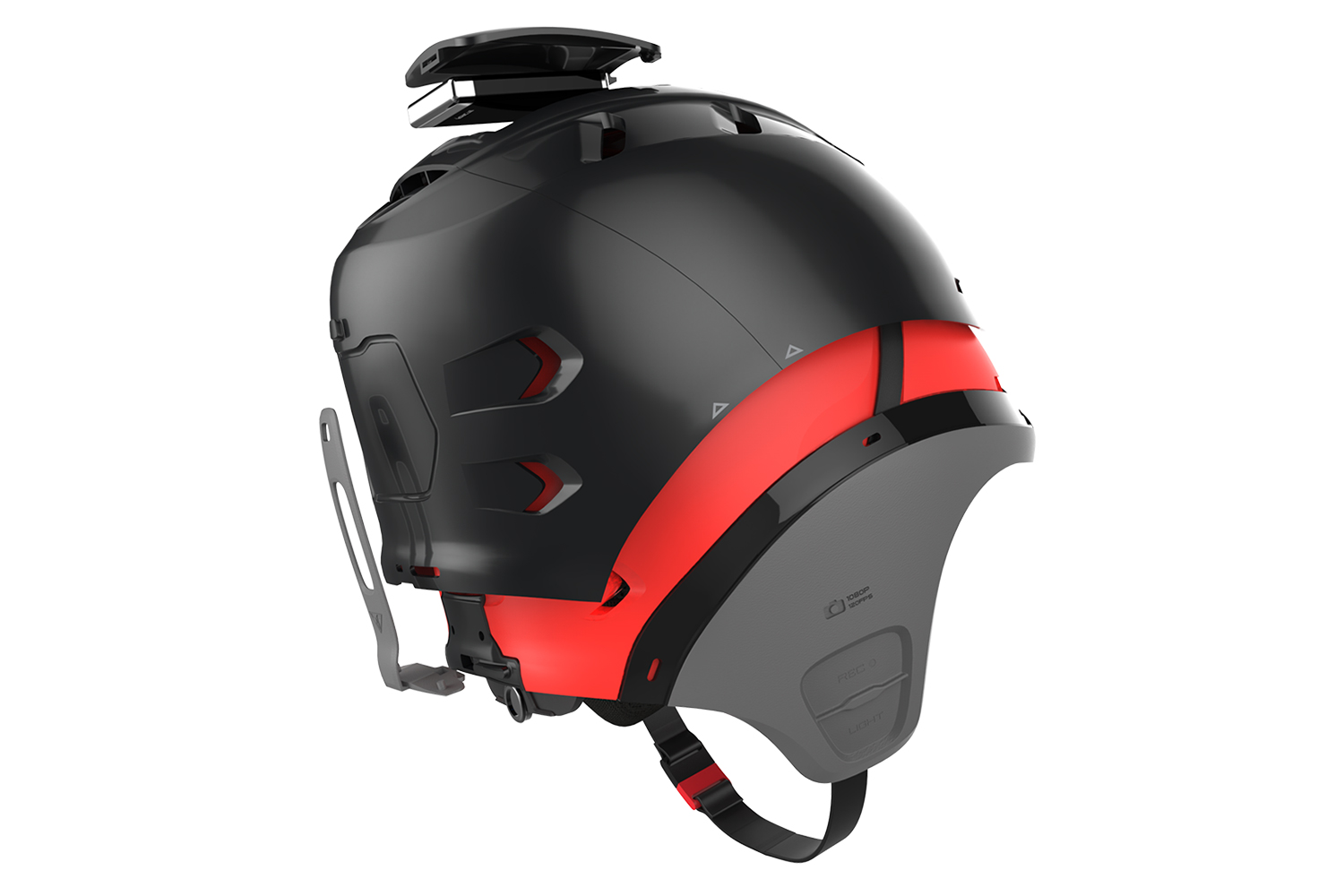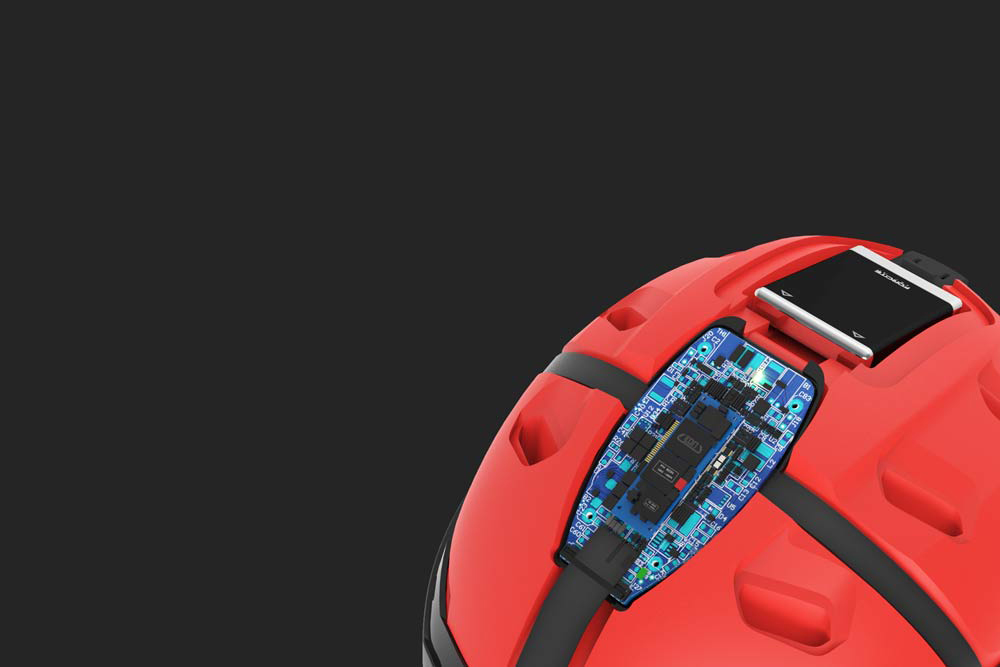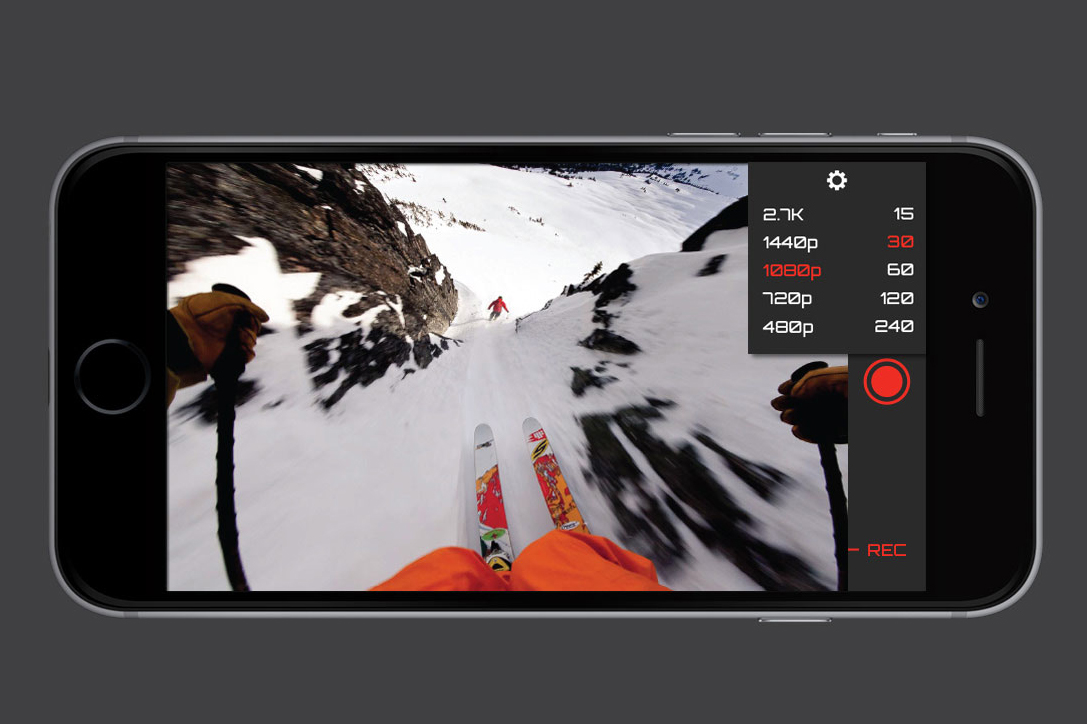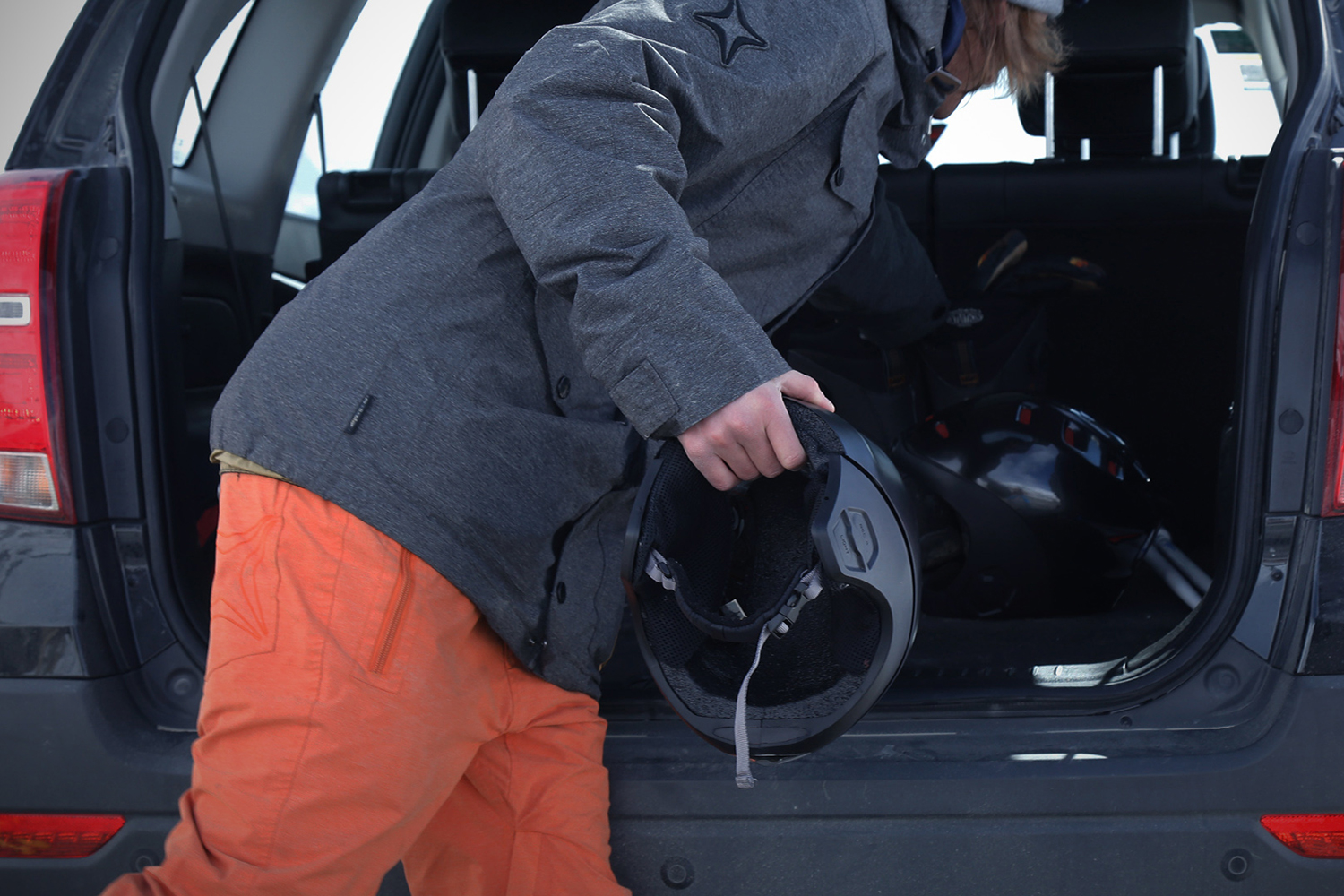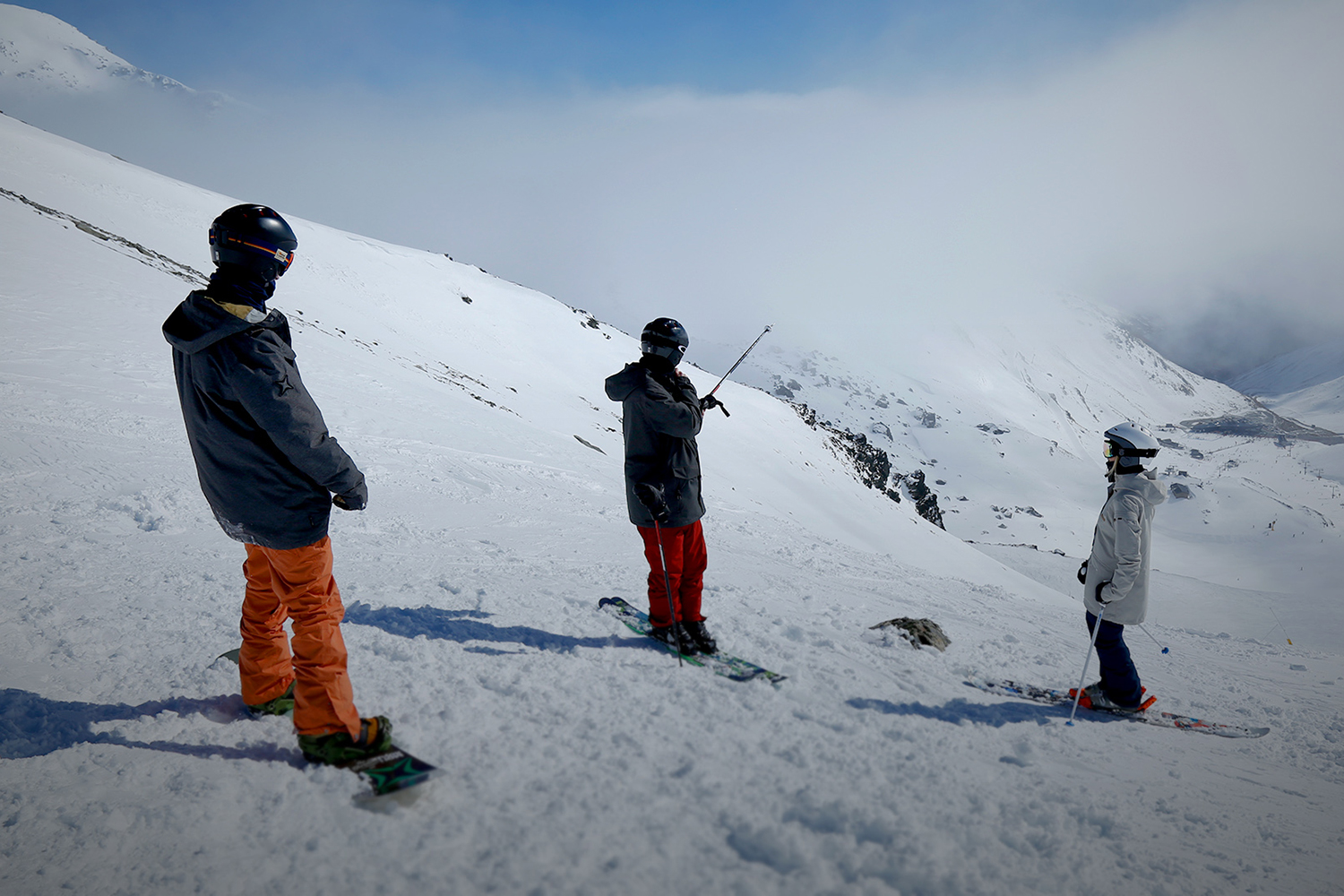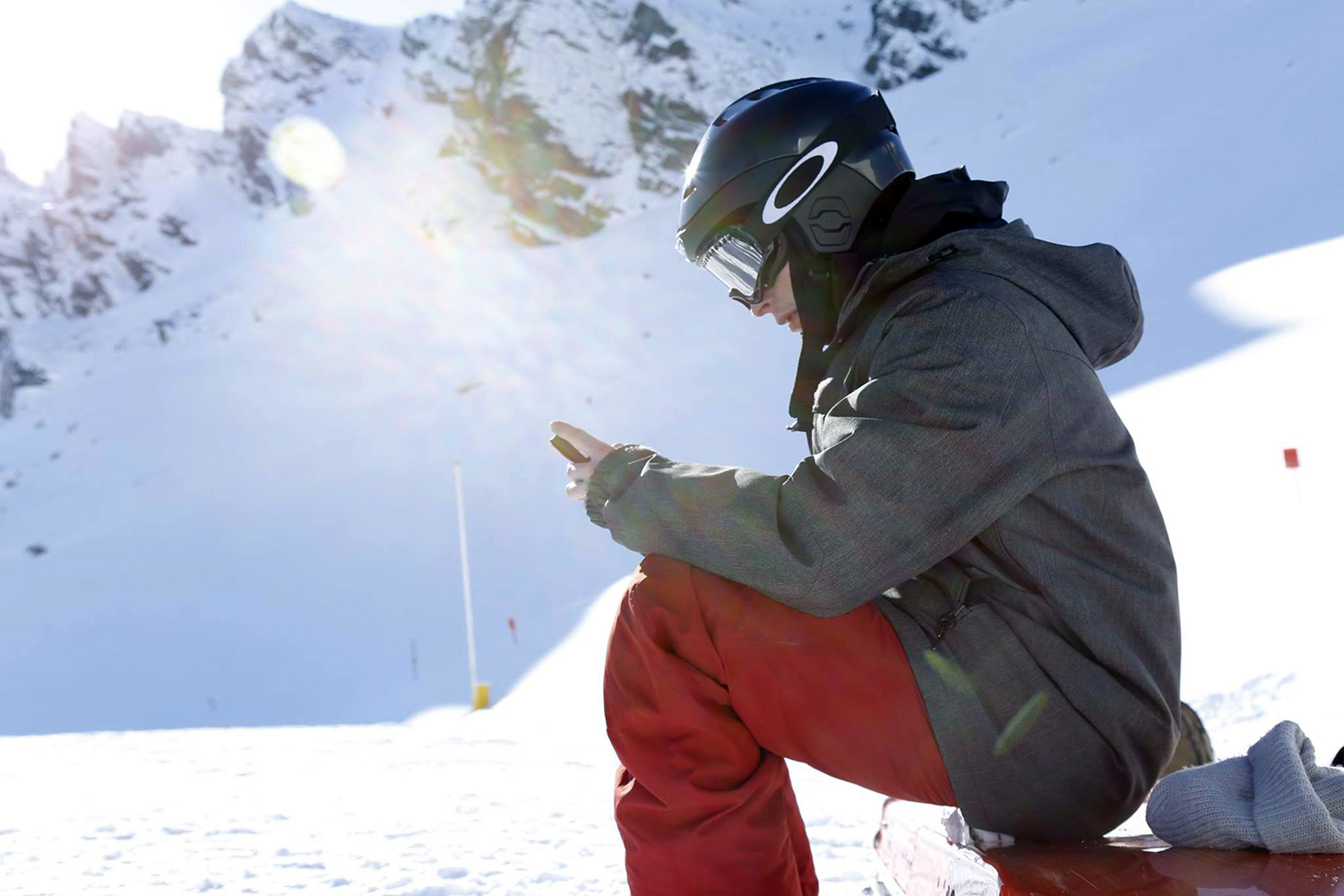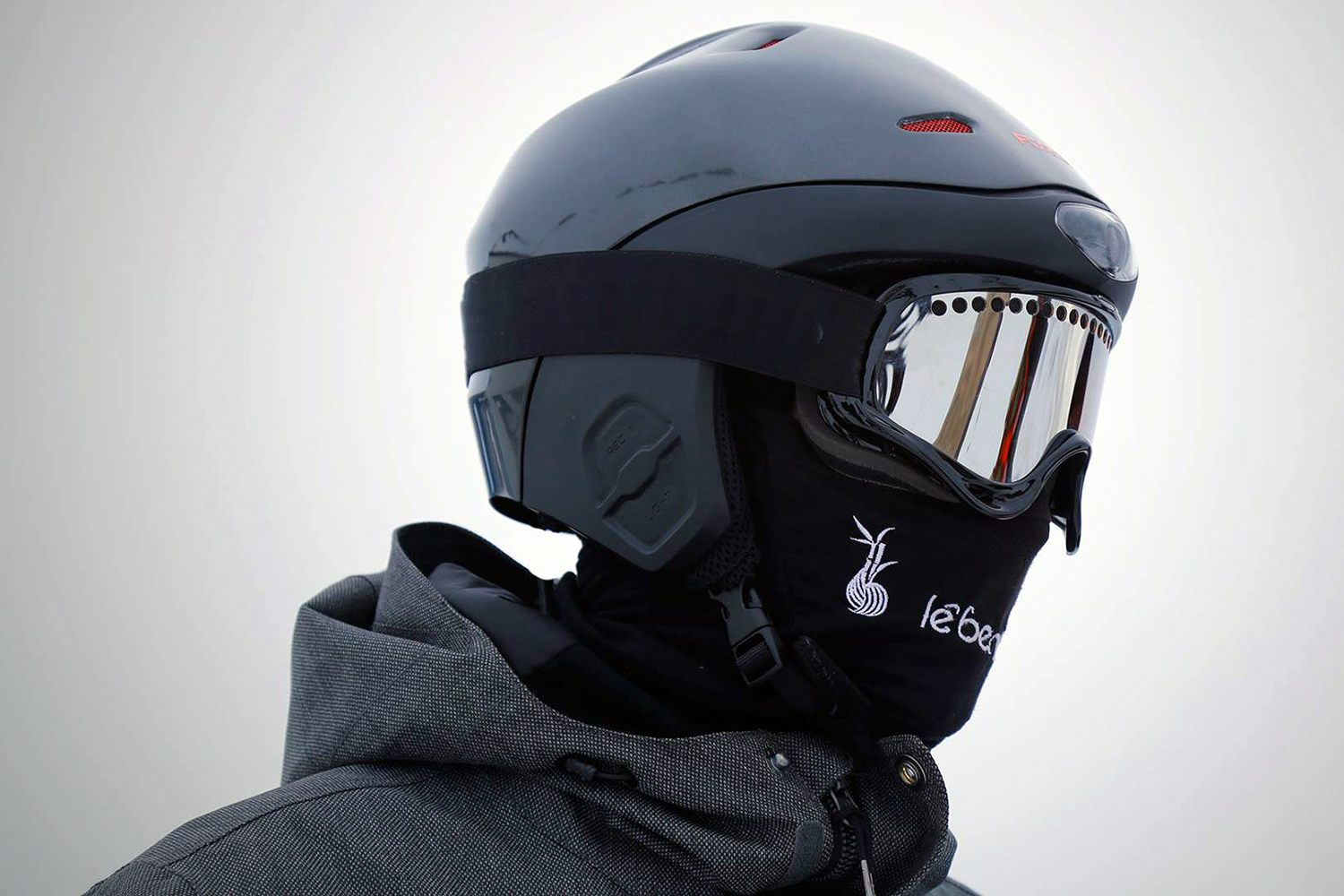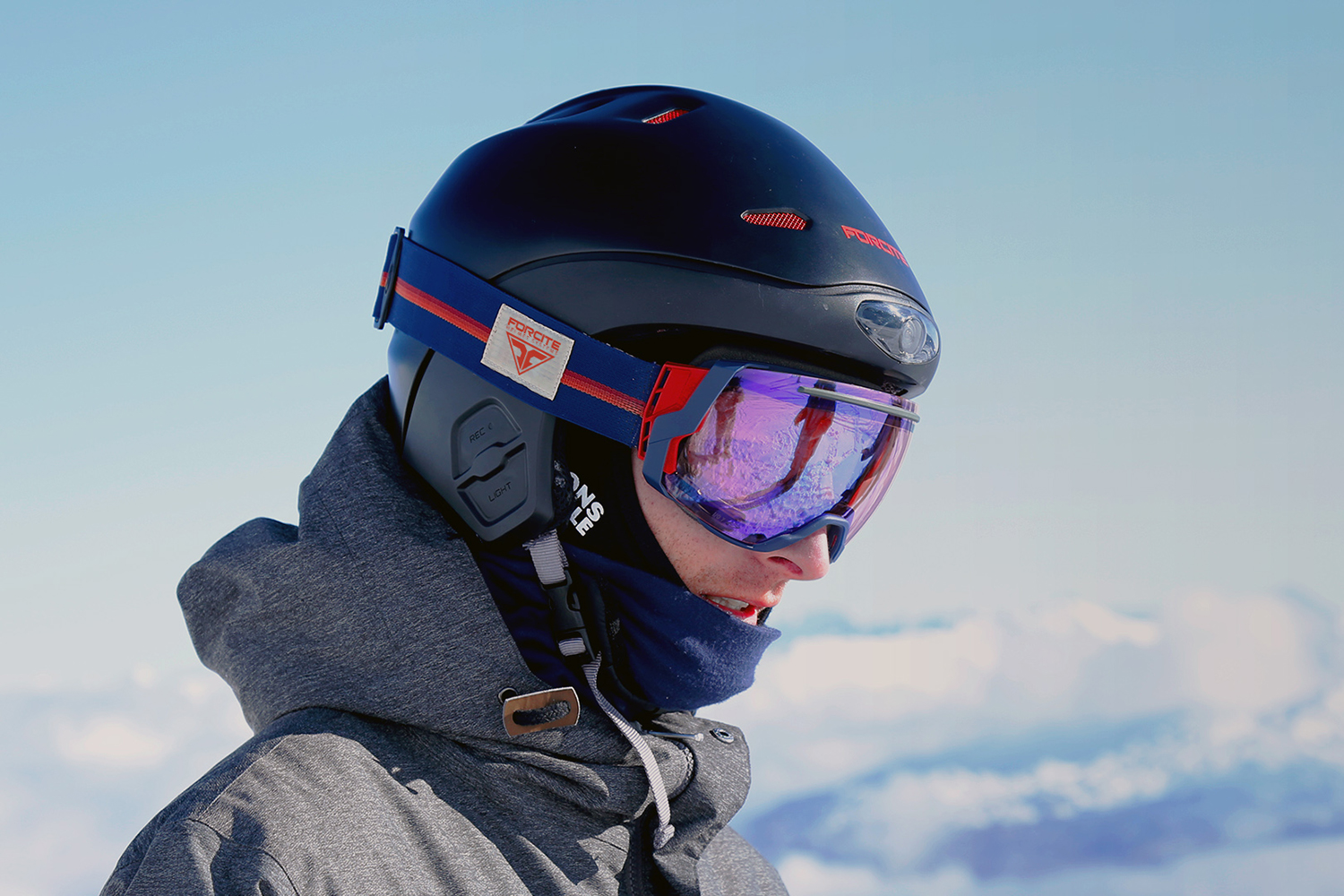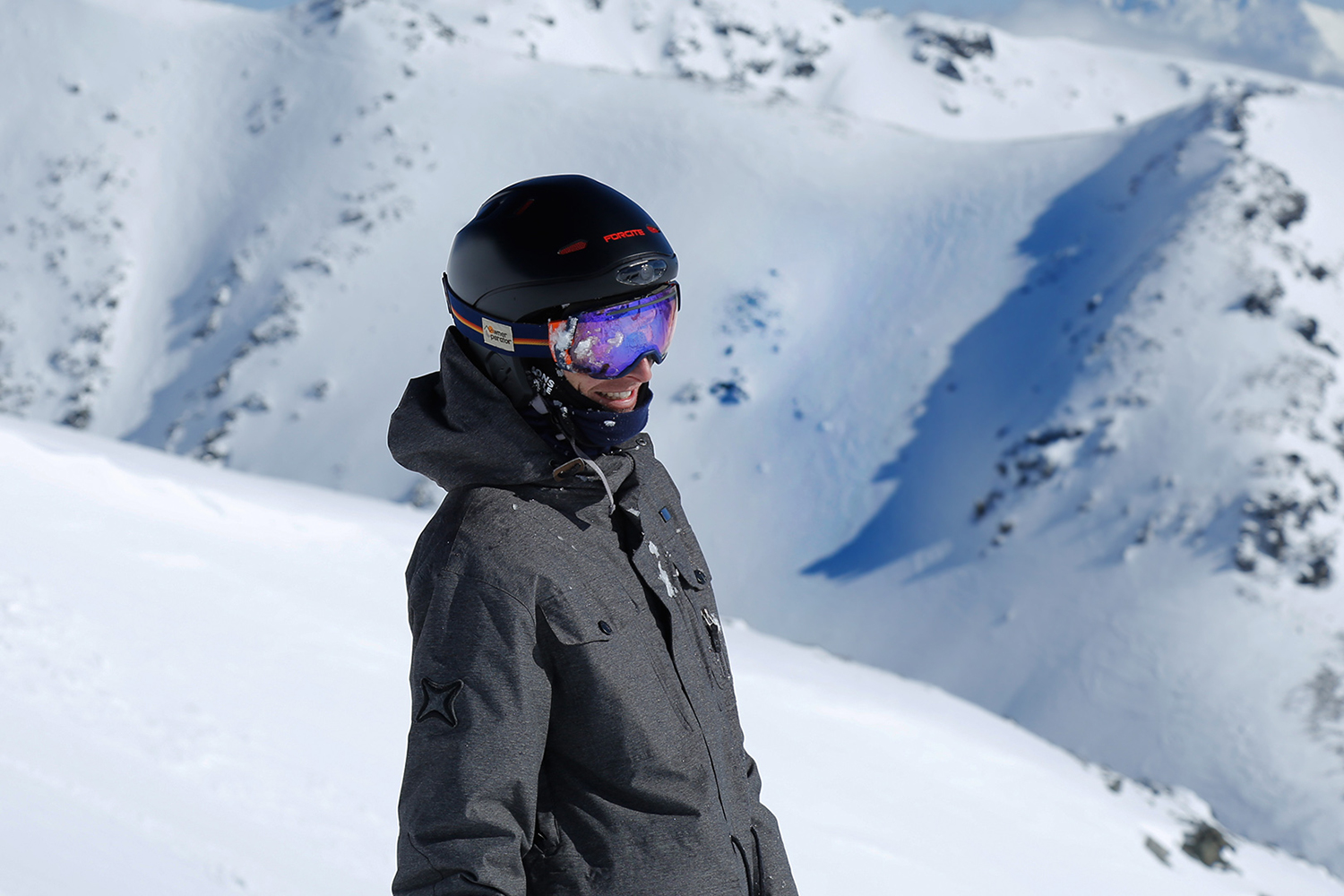Earlier this year, a small Australian company by the name of Forcite caught our attention with a teaser for an upcoming product. The Forcite Alpine helmet, as it was called, was pretty much everything you could ask for on the slopes. Under the safety-certified hull, this thing had a built-in action cam, walkie-talkie, headlights, GPS and even a pair of bluetooth speakers for your music. Back then it was just a prototype, but now the company is gearing up for production, and has taken to Kickstarter with the new and improved device.
The helmet has come a long way in terms of specs. The camera, for instance, started out at simply 1080p, but has now been upgraded to 4K, and even comes with image stabilization now. It will also do slow-mo 120 FPS shots at 720p, and you don’t need mounts or other hardware; it’s all bundled into one device.
The accompanying Forcite Alpine app will include auto-footage editing and stat overlay for videos. This is a logical step to keep the camera tech current. We’ve covered products that add this feature to existing cameras like GoPro, but stat overlay and auto-editing included are already popping up as features included at launch in new action cams and the associated software.
Forcite’s app will overlay top speed, altitude, airtime, and distance. Better yet, it will trim out the parts of your footage that are just plain boring, and skip straight to all the cliff drops and backflips you did on your last run. If you want to re-live all the excellent jokes you told on the chair lift you may have to do some editing by hand, but the auto-edit feature will hopefully save you a lot of time overall.
The Forcite implemented the removable drive, an excellent hardware decision for a piece of equipment designed to suffer rough hits. This means if the processor gets damaged it’s easy to replace. Micro USB and SD ports are in the detachable drive. The speakers for calls and music are also replaceable.
Helmet to helmet communication was another feature that can make life on the mountain easier, and it’s included in the Forcite campaign on Kickstarter. The one catch here is comms are limited to three people and maxe out at 200 meters. To communicate with a large group, you’d have to find a daisy chain of sorts. So, in this instance, the Alpine feature isn’t exactly as robust as the hardware it’s attempting to replace. Considering that not everyone hits the slopes with a huge group of people, it’s a limitation that’s easy to forgive.
One of the most appealing features hasn’t changed; since the buttons are all large and easy to access on the side of the helmet, you don’t need to take your gloves off to answer or make calls, switch music tracks, or drop a map marker. Your fingers are as protected from the cold as your head is protected from impacts.
To bring the helmet to life, The Forcite team is seeking a hefty $200,000 goal. They still have a little less than $100,000 to go, with a little more than two weeks before the campaign ends on October 30. Super early birds can are $649 for one ski helmet. Grab quad or team packs for even steeper discounts over the projected $800 retail price tag. Rewards are set to ship in January 2016, so if the campaign is successful backers will hopefully be able to use them before the season is up this year.
Next page: Read the original article…
Original article, published on January 26, 2015:
Action cameras seem to be getting more advanced every day. Only problem is, no matter how high-tech their specs get, you’ve still got to figure out how to mount ’em. People have tried everything from suction cups, gecko pads, elaborate chest-strap systems, and so on. After all, if you want to shoot hands-free, you’ve got to strap the camera to your body somehow. Still, it’s not exactly the most convenient system.
Australian startup Forcite takes a different approach to the problem. Instead of a modular camera that needs to be mounted, the company built its camera directly into a ski helmet — along with a bunch of other sweet tech. In addition to a 1080p camera that shoots at 120fps, the Forcite Alpine Smart Helmet also boasts:
- GPS tracking
- Motion sensors
- Impact sensors
- Altimeter
- Wi-Fi connectivity
- Bluetooth 4.1
- Wind-resistant microphone
- OLED fog lights
- Integrated speakers
- 6-8 hour lithium polymer battery
… Or at least that’s what the company’s website claims it has inside. The helmet is still under development, so there’s no telling if all of these features will actually make it into the final production model. It’s not out of the question though.
We’ve seen a quite few gadgets that are jam-packed with sensor tech and microcomputers lately (Recon HUD or Bragi Dash headphones, for example) and most of them are considerably smaller than Forcite’s device. A helmet provides a fair amount of real estate to cram full of tech, so it stands to reason that all these features could potentially fit inside of one helmet.
If they can, and Forcite isn’t just blowing smoke, then the Alpine Smart Helmet will be a force to be reckoned with. With this much tech under the hood and a little bit of creative programming, pretty much anything is possible.
Dropped a glove off the chairlift on your ride up? The helmet’s GPS could drop a pin to save the coordinates, then guide you back to that exact location with the integrated speakers, which could beep with increasing frequency as you get closer to your lost glove.
If the helmet’s impact sensors sensed that you bumped your noggin a bit too hard, the built-in motion sensors could be used to determine if you stopped moving, and then use a Bluetooth connection to call for help through your smartphone.
That is all just speculation at this point, but we’re keeping our fingers crossed. No word yet on a production timeline, preorder date, or how much this badboy will cost, so we’ll have to wait for Forcite to release some additional info to get the full picture.


